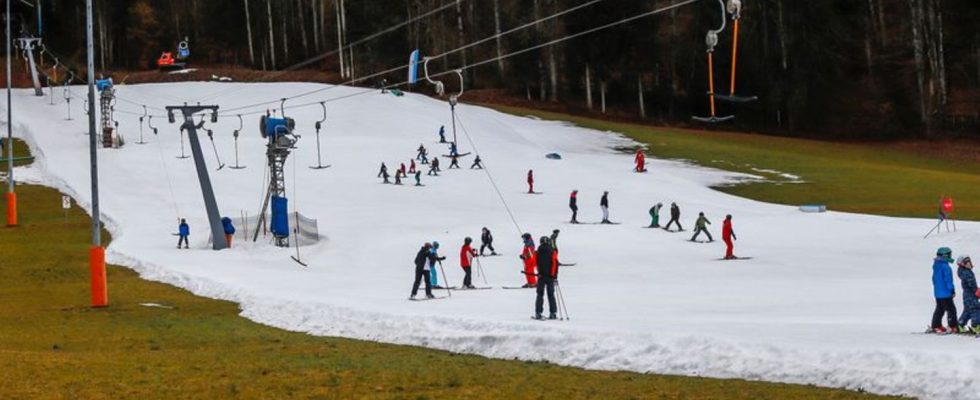winter sports
Climate crisis hits ski areas: snowmaking is not a permanent solution
The traces of the climate crisis can already be seen in many ski areas. photo
© Uwe Lein/dpa
Is the snow coming or not? The climate crisis is already making itself felt in many European ski resorts. A study shows that in many places skiing will no longer be possible in the future.
Climate change will have immense consequences for European ski tourism. Researchers have now calculated which ones Ski areas it will probably be particularly critical. With global warming two degrees above pre-industrial levels, there will be a very high risk of snow shortage in around half of the ski areas in 28 European countries, predicts the team of experts in the journal “Nature Climate Change”.
If more and more attempts are made to keep ski tourism running with the help of artificial snow, this will increase water and energy requirements, and thus carbon emissions – and thus accelerate the climate crisis even further.
In addition, snow can only be made at sufficiently low temperatures. It is therefore necessary to reconsider whether it really makes sense to maintain the high dependency on winter tourism in certain regions, write the scientists led by Samuel Morin from the Center National de Recherches Météorologiques in Grenoble.
According to this, Europe is the most important location for skiing: around half of all ski areas worldwide are located here and more than 80 percent of the ski areas, each with more than a million users a year.
German alpine ski areas could soon be free of snow
The study considers the situation for 2234 such areas in Europe with a warming of up to four degrees. According to the modeling, at four degrees practically all ski areas would have a very high risk of insufficient snow conditions, although there are large regional differences. Without exception, all ski areas in the German Alps would run out of snow at three degrees without artificial snowmaking.
According to the analysis, if the temperature increase were limited to 1.5 degrees, around a third (32 percent) of Europe’s ski areas would be at serious risk. This proportion can be limited to 14 to 26 percent through snowmaking, i.e. the use of snow machines. However, a number of climate experts are now assuming that a limit of 1.5 degrees would hardly be achievable, even with the greatest efforts immediately.
The study is associated with limitations and simplifications, according to the researchers, further data would have to be included for detailed local results, for example on the location, characteristics of the snowmaking systems used and the availability of water and energy sources. Local considerations on the future of ski tourism would also have to include other parameters – such as the behavior of skiers. For some tourists, an artificial snow slope surrounded by greenery is more of a deterrent than attractive.
In addition, it is questionable whether CO2-intensive tourism activities such as ski tourism in its current form are compatible with the far-reaching measures needed to limit global warming to below two degrees. Even if a significant part of Europe’s ski resorts could long be able to offer ski tourism, it would be a big challenge for the destinations to make the necessary contribution to reducing greenhouse gas emissions.
Commenting on the study, Paul Peeters from Breda University of Applied Sciences (Netherlands) writes that the size and number of European ski resorts is expected to decrease as a result of the dwindling snow cover in most mountain areas. Switching to other forms of tourism could make more sense for many affected mountain regions, both from an economic and ecological point of view.

